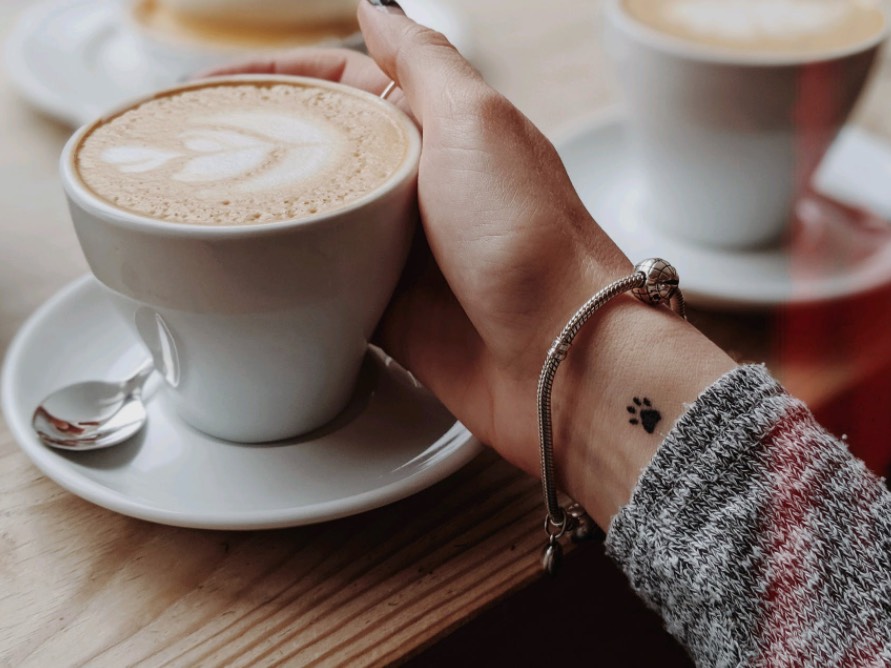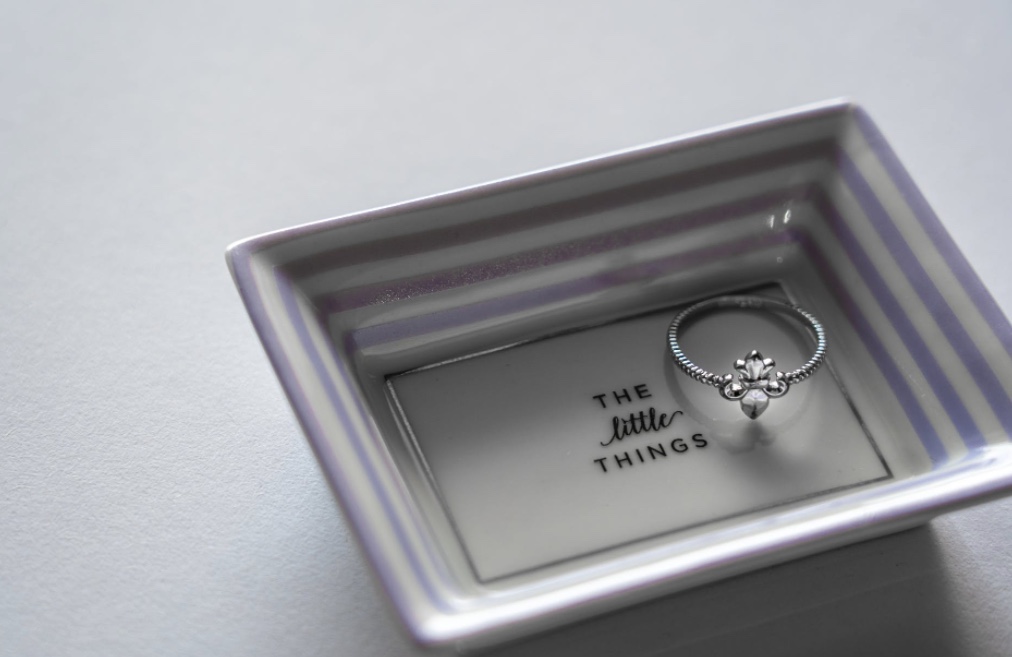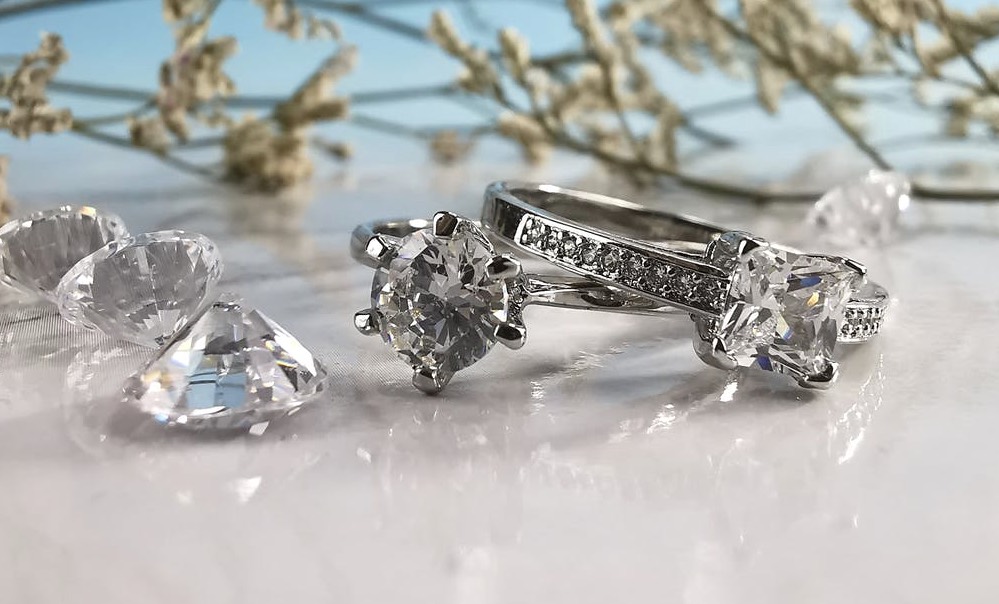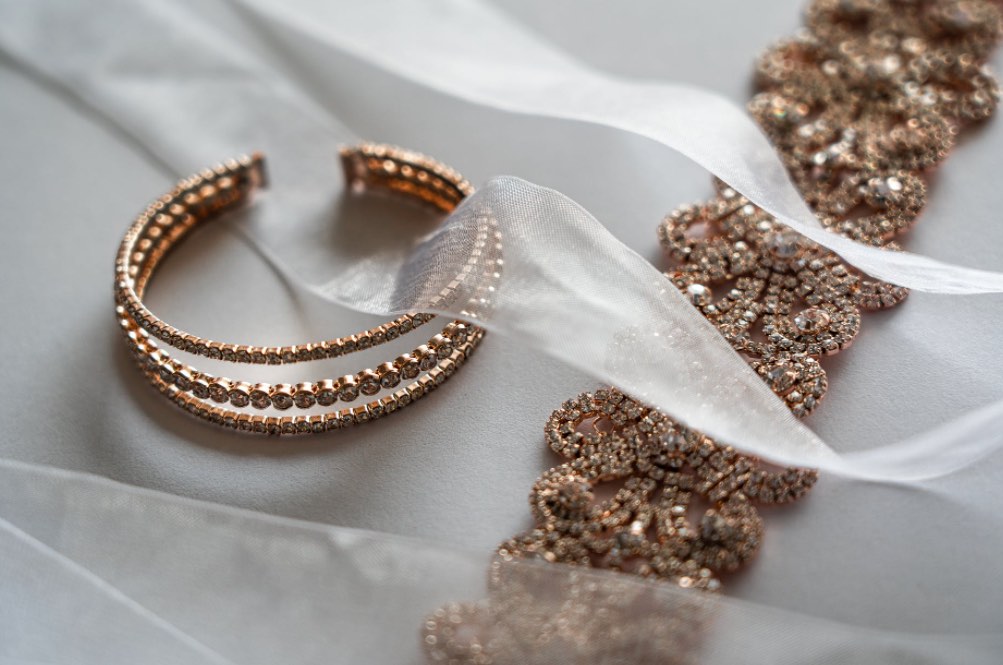Silver, like gold and copper, is a precious metal that can be polished to a mirror finish and features a soft, ductile, and malleable texture. Although it is not as hard as gold, it can be made stronger through alloying with other metals. But what does sterling silver mean?
Silver, along with gold, copper, tin, lead, iron, and mercury, is one of the seven metals of antiquity that were familiar to ancient peoples. Because of its lengthy history of use, however, its origins and early applications are obscured. It's more difficult to mine for and remove from its ore deposits since it's more reactive than gold. This meant that silver was more valuable in antiquity since supplies were limited until the Egyptians discovered new methods of refining it around 1500 BC.
Actually, there are other elements in pure silver than silver itself. It is nearly pure silver (99.9%) with trace amounts of other metals like copper. Conversely, Sterling Silver contains 92.5% silver and the remaining 7.5% copper (by weight). For this reason, most people will refer to Sterling Silver as either 925 Sterling Silver or 925 Silver.
Since pure silver is so soft and malleable, it is usually mixed with other metals to form more durable and sturdy jewellery and other objects. Adding harder metals like copper is necessary to get the desired level of toughness. This allows jewellers to create even the most complicated and detailed designs using 925 Sterling Silver. Looking for the ultimate Wedding Reception Venue in Melbourne? Look no further, Vogue Ballroom is here.

What Exactly Is Sterling Silver?
In order to be considered sterling silver, an alloy (blend) must include silver at a concentration of 92.5% or above. 925 sterling silver, the most common sterling alloy, has 92.5% silver and 7.5% copper. For increased strength and brittleness, pure silver can be alloyed with copper to produce sterling silver. Pure silver is 92.5 percent, thus sterling silver typically has 7.5 percent copper or other metal added to make an alloy (usually nickel or zinc).
Coin silver, an alloy of lower purity, is another option. Most of the time, its silver content is 90% or less. The anti-tarnish properties of Argentium sterling silver come from its composition of 1.2% germanium, 6.3% copper, and 92.5% silver. This silver alloy, patented in 925, resists tarnish and becomes even more impervious to oxidation with time. As the alloy's germanium atoms migrate to the surface, the germanium oxide layer can be rejuvenated. Because Argentium silver doesn't create firescale, it's more eco-friendly to produce.
Fine silver, frequently denoted by the stamp ".999," is 99.9 percent pure silver and, as such, is softer and more flexible than sterling. Fusing fine silver is possible as well. (Sterling silver necessitates solder, while fine silver merely calls for heat to unite it.) The word "sterling" is typically stamped onto sterling silver components and jewellery that was created in the United States. The number "925" indicates a purity of 92.5% and is commonly found on export goods. In several nations, silver "coins" are circulated; their fineness is indicated by a "900" or "800" mark.
It's harder to make out any other potential markings. Nothing in the words "German Silver," "Mexican Silver," "Indian Silver," "Montana Silver," or "silver" suggests that the item actually contains silver. The common name for the alloy of copper, nickel, and zinc is "nickel silver," although you may also hear it referred to as "German Silver," "Alpacca," or "Alpaca." Nickel silver is not actually silver, despite the name.
Precious metals must be stamped with a quality mark, such as "925" for sterling, in many nations. Furthermore, before being marketed and sold, jewellery made of precious metal must be submitted for destructive testing at a government assay agency in some nations. Examination of sterling silver is simple. Because of the copper content, a drop of nitric acid will become green when applied to silver-plated brass, nickel silver, or low-quality silver alloys. The silver's hue will soften to a milky white. Suspect items can be examined by using a tiny file to scratch through any plating or lacquer in a hidden region.
Is Sterling Silver Authentic?
The question, "Is sterling silver indeed silver?" may arise. Unquestionably, it is the case. The alloying process that produces sterling silver makes it ideal for use in jewellery and other decorative metals. Fine silver has a purity level of 99.9%. While this form of the metal is attractive and tarnishes just slightly, it is far too soft and pliable to be used for many purposes, including the creation of most jewellery. Instead, sterling silver is made by mixing 92.5% pure silver with 7.5% copper to make an alloy. Sometimes you'll hear people refer to sterling silver as "925 silver" or see a 925 hallmark because of the high percentage of pure silver it contains.
Copper improves silver's hardness and durability without altering the metal's lustre or colour, making it ideal for a wide range of applications. For this reason, you can rest assured that the silver jewellery you purchase and wear will be of the highest quality. The only real drawback of sterling silver is that the copper in it accelerates tarnish, so that the metal gradually turns dark brown or black over time—especially when exposed to moisture. However, sterling silver tarnish is easily removed, and the metal underneath is still in excellent condition, resistant to rust and wear and tear. Let Vogue Ballroom Wedding Venue help you create the most magical day of your life.
Though not quite as pure as silver itself, sterling silver is nevertheless a valuable metal. It is always 92.5% pure silver, however. Because of its softness, pure silver isn't a good choice for jewellery or other items that will be handled regularly. In order to increase the longevity of pure silver products, producers often combine it with other metals. Metals like copper and zinc are examples of them. The alloy can't contain more than 92.5% non-silver elements by weight. A piece of jewellery cannot be labelled "sterling silver" if the percentage of pure silver in it is either lower than 92.5% or higher than 93.5%.
Metals of different sorts are often combined to form alloys. When the metals are melted, they can be combined to create a new substance that combines the best qualities of the original metals.
While the exact origin of silver alloys remains a mystery, its widespread use in the 11th century indicates that it was likely invented around that time. For instance, William the Conqueror's Norman Penny (1083) for Great Britain was minted from silver alloy. Old English sterling could have come from the phrase "like a little star," which appears on several of the early coins.
The vast silver mines of the Americas were found by the Europeans during their conquest of the continent. As Central and South America became the world's top silver-producing regions, silversmiths flocked to the area. Craftspeople have made just about everything out of sterling silver, which is silver that has been strengthened with copper or another metal. This includes perfume bottles, kitchenware, medical equipment, jewellery, and musical instruments.
What Are The Benefits Of Using Sterling Silver In Jewellery?
Can you tell us the difference between silver and sterling silver? That is totally up to you and your application. Since pure silver jewellery is so vulnerable to harm, sterling silver is usually the best alternative. Some of the many reasons why sterling silver is such a popular and desirable metal for jewellery are as follows:
- Durable - Since sterling is one of the most long-lasting precious metals, it is a great choice for filigree and everyday wearables.
- Cost-effective - The price of sterling is far lower than that of gold, platinum, and other precious metals.
- Hypoallergenic -Sterling silver is hypoallergenic, per the Mayo Clinic. If your skin is sensitive to metals like nickel, this is a fantastic alternative.
- Valuable - Sterling silver jewellery is a good investment because the metal is highly valued. Costume jewellery created from materials other than brass may be an exception to this rule.
Sterling Silver Value
Sterling silver is the least expensive precious metal used in jewellery production, while being ranked fourth on the list of precious metals used in jewellery production. The high cost is due to sterling silver's high worth. This is due to the fact that when compared to other metals, sterling silver's value appears lower than it truly is. Therefore, you will see how valuable and pricey sterling silver may be when you analyse its value independently without any comparisons.
Sterling silver is worth more than its weight because of its design, its history, and the fact that it is 92.5% pure silver combined with 7.5% of another metal, which is the famous benchmark by which sterling silver is valued. Here, we offer a condensed explanation of these four variables.
How Can You Tell If It's Sterling Silver?
In most cases, a quality stamp will serve as your best indicator that an item is made of sterling silver. All sterling silver must bear a quality or fineness stamp that certifies its precious metal composition, as required by international regulations. Many people use these as a way to identify sterling silver:
- Sterling
- Sterling silver
- Ster
- 92.5
- .925
- 925
Try inspecting hooks, clasps, and other concealed fasteners for the logo. There should be a quality stamp indicating that the product is 99.9 percent silver if it is fine silver. This could be the numbers.999, 999, or 99.9.
Typically, the mark can be relied upon to accurately indicate the amount of silver in the item. If you're still sceptical, though, you may check the silver content of your jewellery in a few different methods. To start, put it to the magnet test; genuine sterling silver shouldn't attract a magnet. It's not silver if it attracts a magnet really strongly.
The ice, ring, acid, and bleach tests are some other examples of procedures. In any case, a professional jeweller is your best bet for determining the true quality of your silver jewellery. They are experts at evaluating jewellery and will not harm yours in any way while doing it.
Is Sterling Silver As Valuable As Pure Silver?
Sterling silver's value is lower than that of pure silver, yet it's still pretty considerable. Consider, for instance, a brooch that is in a terrible state of disrepair. It's not particularly pretty, but you're curious about the value of the silver it contains. You can tell if the half-ounce brooch is more or less valuable depending on whether it is made of pure silver or sterling silver. Keep in mind that this value is always shifting, so the silver price shown here is merely an estimate.
- The brooch might be valued roughly $11.50 if it is half an ounce of pure silver.
- A half-ounce of sterling silver (or 92.5% pure silver) would give the brooch a potential value of $10.67.
Is Sterling Silver High Quality Or Affordable?
Whether or whether sterling silver is a desirable jewellery material depends largely on personal opinion and the materials to which it is being compared. When compared to other precious metals of the same colour and purity, white gold, palladium, and platinum all have higher market values than sterling silver. To that end, you might be disappointed if you purchase sterling silver jewellery with the expectation of receiving one of these metals. Nonetheless, sterling silver is of much higher quality and more precious than cheaper metals like nickel or steel. Vogue Ballroom is your ultimate Wedding Reception Venue to create your dream wedding.
FAQs About Sterling Silver
Durable and Light. The added metals in sterling silver make it an incredibly durable material — it's even stronger than gold. In addition to its lightweight, this quality makes it an ideal choice for jewellery that will be worn daily or often.
Sterling silver is defined as a metal alloy (blend) containing at least 92.5% silver. The most common sterling alloy is 92.5% silver and 7.5% copper.
Sterling silver isn't as valuable compared to other precious metals, at least not in its base form. A small piece of sterling silver that hasn't been transformed into anything has a value similar to that of spot silver, but it could be worth a lot more depending on its application.
Fine silver has a higher purity percentage of silver, making it more expensive than the less pure sterling silver. However, sterling silver is much more durable compared to fine silver because of the added metal alloys. This can help your piece last and stay looking the best it possibly can for longer.
Most of the sterling silver jewellery has some sort of plating because silver itself turns yellow over time. The most expensive way of finishing sterling silver jewellery is using Rhodium. Rhodium is a precious metal that is even more expensive than silver.
What Is The Difference Between Sterling Silver And Pure Silver?

Strength
Silver in its purest form is a pliable metal, not noted for its strength. Because of this, it is a poor material choice for anything that has to keep its form, like coins, tableware, or jewellery.
In contrast to regular silver, sterling silver retains all of silver's lustre without any of its fragility. Because it retains its form, sterling silver has been fashioned into everything from elaborate serving platters to diamond tiaras. It makes practical use of the silver rather than just showing it off.
Appearance
One reason copper is the most common metal to mix with silver is that even when sterling silver is mixed with other metals, it appears the same as sparkling fine silver. Copper ensures the alloy lasts as long as possible without diminishing its beautiful sound. So, if you're worried that sterling silver won't look as nice as fine silver does after time, you may relax. Even a professional jeweller would have a hard time distinguishing between the two metals just by looking at them.
Price
The initial investment in materials for creating a piece of jewellery made from pure silver is higher than for a sterling alloy. Because of this necessity, the finished product is far more expensive, making silver unfeasible for use in mass-produced jewellery. Alternative: sterling silver, a relatively inexpensive metal. This, along with its superior strength, makes it a versatile material with many possible uses.
Maintenance
Metals undergo a chemical reaction known as tarnishing, which causes them to darken and lose their lustre over time. Tarnish forms on metal when it comes into contact with sulphur in the air or water, dulling the metal's appearance. Like pure gold, pure silver does not react easily with other substances. Because it does not corrode in the presence of oxygen or water, it retains its lustre for a long time. However, unlike fine silver, sterling silver tarnishes easily when exposed to air and water. Sterling silver, while more practical than pure silver, does need a bit more upkeep to look its best.
There is a good reason why sterling silver is one of the most widely used metals for jewellery production. Sterling silver jewellery never goes out of style due to its classic good looks and enduring appeal. Whether you currently have some sterling jewellery or are on the market for new pieces, it is helpful to have some background knowledge regarding this rare precious metal.
Many jewellery metals that appear silver-colored are really made from metals with very different chemical compositions. Some alloys, such as nickel silver, German silver, alpaca, and paktong, can fool the untrained eye into thinking they are silver, although they are actually made of nickel, copper, and zinc. Barrettes, pillboxes, and other forms of costume jewellery frequently have "silvers" made of alpaca or nickel.
A wide range of skin tones can look good in sterling silver because of its stunning bright and warm hues. In addition, unlike with other metals, it is extremely rare to cause any kind of skin irritation in people who already have sensitive skin. In addition, you can afford to buy a lot of beautiful silver jewellery because its price is so much lower than that of more expensive metals like gold and platinum.
Silver, like gold, will keep its worth relative to other commodities throughout time, and it may even gain in value. Also, the metal can be recycled and utilised in an infinite number of ways. Silver jewellery will enhance the elegance, value, longevity, and adaptability of your existing collection. The best jewellery to buy would be silver.
Conclusion
Similar to gold and copper, silver has a soft, ductile, and malleable feel and may be polished to a mirror finish. Some other metal, generally copper, is added to the silver to form an alloy called sterling silver, which contains 92.5% silver (usually nickel or zinc). To begin with, Argentium sterling silver doesn't tarnish, and it gets even more corrosion-proof over time. You can tell fine silver is 99.9 percent pure since it has the stamp ".999" on it. In some countries, the numbers 900 or 800 on silver "coins" denote their value.
The 99.9 percent pure silver used in making fine silver is far too malleable to be utilised in jewellery. Instead, pure silver (at least 92.5% of the total) is alloyed with copper to create sterling silver. Silver's hardness and durability are both increased by copper, which doesn't change the metal's appearance otherwise. When it comes to precious metals, sterling silver is the most affordable option for making jewellery. Sterling silver is valued at what it is: a silver-based alloy containing 92.5% pure silver.
Because of the metal's high worth, purchasing sterling silver jewellery might be a wise financial move. There must be a quality or fineness stamp on all sterling silver, proving its precious metal content. In order to know for sure how good your silver jewellery is, you should take it to a competent jeweller. The value of sterling silver is less than that of pure silver, yet it is still rather high. Pure silver is a soft metal that is not particularly strong.
Despite its strength, sterling silver nevertheless has the same lustre as pure silver. In order to create a piece of jewellery from pure silver, one must first spend more money on the raw materials. Silver jewellery will elevate the sophistication, financial worth, durability, and versatility of your current assortment. Nickel silver, German silver, alpaca, and paktong are just a few examples of alloys that seem like silver but are actually comprised of nickel, copper, and zinc.
Content Summary
- Alloying pure silver with copper makes sterling silver more durable and brittle.
- The germanium and copper in Argentium sterling silver help prevent tarnishing, but the high silver content (92.5% by weight) is also responsible for its durability.
- There is also the possibility of fusing fine silver.
- Sterling silver is easy to inspect.
- Rather, sterling silver is an alloy composed of 92.5% pure silver and 7.5% copper.
- Even though it isn't quite as pure as silver, sterling silver is still a precious metal.
- The silver content, however, is a constant 92.5%.
- Pure silver, being so pliable, is not a good choice for jewellery or other objects that will be handled frequently.
- Producers frequently alloy pure silver with other metals to make the product last longer.
- Nothing less than 92.5% or more than 93.5% pure silver can be called "sterling silver," and vice versa.
- Alloys are frequently created by combining various metals.
- When compared to other metals, how does sterling silver do when used to make jewellery?
- I was hoping you could explain the distinction between regular silver and sterling.
- Sterling silver jewellery is a wise financial investment because the metal itself is so valuable.
- When it comes to the cost of precious metals used to make jewellery, sterling silver ranks fourth but is still the most affordable option.
- The high price tag is a reflection of the great value of sterling silver.
- The recognised benchmark for the value of sterling silver is the ratio of 92.5% pure silver to 7.5% of another metal, but the design and history of sterling silver itself also contribute to its high value.
- The following is a brief description of these four factors.
- The best evidence that an item is made of sterling silver is a quality stamp.
- When purchasing fine silver, make sure to look for a quality stamp certifying that the product contains at least 99.9 percent silver.
- The best person to ask about the authenticity of your silver jewellery is a professional jeweller.
- Its lack of aesthetic appeal is offset by your interest in learning more about the potential profit from the silver it holds.
- Sterling silver's desirability as a jewellery material is highly subjective and relative to the standards against which it is judged.
- It takes more silver, and thus a larger outlay of money, to make a piece of jewellery out of pure silver than it does out of sterling alloy.
- Sterling silver is an alternate, less expensive metal.
- Pure silver, like pure gold, is relatively unreactive.
- However, sterling silver tarnishes quickly when exposed to air and water, but fine silver holds its lustre for a much longer period of time.
- Silver is one of the most popular metals for making jewellery, and for good reason.
- Jewelry made from sterling silver will never go out of style because of its timeless elegance and beauty.
- If you own any sterling jewellery or are on the market for some, it will be useful to familiarise yourself with the history and characteristics of this valuable metal.
- Since sterling silver has such beautiful bright and warm tones, it complements a wide variety of skin tones.
- Silver jewellery will elevate the sophistication, financial worth, durability, and versatility of your current assortment.
- If you're looking for jewellery, silver is your best bet.


